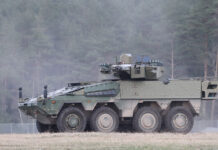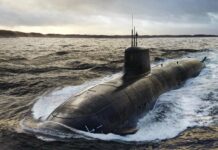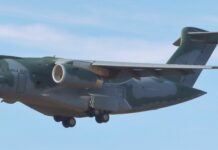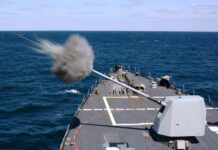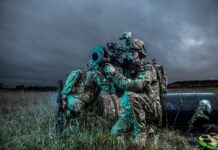Australia’s AIR 7000 programme aims to replace the nation’s current maritime patrol and response capability – which centres around the AP-3C Orion aircraft – with a combined force of manned P-8A Poseidon aircraft and the MQ-4C Triton unmanned aerial system (UAS).
The AP-3 entered service with the Royal Australian Air Force (RAAF) in 1968, and is currently being drawn down to retirement. The two new aircraft promise significantly improved range and sensor performance. The core concept of AIR7000 revolves around the teaming of the manned and unmanned assets, which will boost the maritime patrol and response effectiveness beyond the capabilities of either aircraft alone.
P-8A Poseidon
The P-8A Poseidon multi-mission maritime patrol aircraft, based on the commercial Boeing 737-800 airframe, entered service with the RAAF in 2016. Twelve aircraft are currently operated by the RAAF’s No. 92 Wing stationed at RAAF Base Edinburgh, located at the southern Australian coast near Adelaide. Operational aircraft are attached to the wing’s No. 11 Squadron, while the wing’s No. 292 Squadron acts as the training unit for aircrew, maintenance and operations personnel. No. 11 Sqn utilises several additional operating bases located on the western, northern and eastern Australian coasts, ensuring 360° coverage of the oceans surrounding the nation.

Credit: Australia MoD
The P-8A is officially designated as the Maritime Patrol and Response Aircraft System. Missions include: anti-submarine warfare (ASW), anti-surface warfare (ASuW), search and rescue (SAR), maritime intelligence, surveillance and reconnaissance (ISR), and overland ISR. The integrated sensor suite includes advanced radar, optical, electronic and on-board acoustic systems. Additionally the aircraft can internally carry and deploy 129 sonobuoys. AGM-84 Harpoon anti-ship missiles (ASM) and lightweight anti-submarine (ASW) torpedoes can be carried in the internal weapons bay as well as on underwing pylons. The Poseidon will also be able to deploy the Long Range Anti-ship Missile (LRASM) once it is fielded with the RAAF.
Depending on mission profile and payload, unrefuelled range can reach 7,500 km. According to the RAAF, the 34 tonne internal fuel capacity allows the P-8A to conduct low-level anti-submarine warfare operations more than 2,000 kilometres from base. The operational range can be expanded through aerial refuelling.
MQ-4C Triton
To date the RAAF has contracted for three units of the MQ-4C Triton UAV. Australian personnel began training on the platform in the United States in November 2022. The first aircraft was presented to the press in September 2022, but this preceded final system integration and flight testing. As confirmed by Deputy Prime Minister and Minister of Defence Richard Marles on 3 March 2023, Northrop Grumman will actually transfer the first of the aircraft to Australia in 2024. Initial Operating Capability (IOC) is slated for 2026. Full Operating Capability (FOC), defined as “the ability to conduct two orbits, in all roles, at a rate of effort in accordance with strategic and capability guidance,” is expected in the 2030-2031 timeframe.
The Triton UAS is categorised as a HALE (High-Altitude/Long-Endurance) system. The UAV is remotely flown by a pilot and co-pilot seated at a ground station. The Triton has 24+ hours endurance (with an 80% effective time-on-station) and a flight ceiling of circa 15,400 m. The payload package includes a multi-mode X-band radar, optoelectronic day/thermal sight, and a signals intelligence suite. Sensors can conduct wide-area surveillance with 360 degree coverage, or focus on individual targets of interest to gain detailed information. In wide-area mode the aircraft can survey an area covering one mission square nautical miles during a single mission. The Air Force intends to use the Triton for maritime patrol and for additional ISR roles.

Credit: Northrop Grumman
The unmanned aircraft are being based alongside the manned P-8A units stationed at RAAF Edinburgh. Operational flights will be launched from RAAF Tindal, which is located circa 300 km from the northern coast near Darwin. According to Group Captain James Parton, Director, ISR Transition Office, this will require a steady presence of 10-12 pilots plus circa 40 Northrop Grumman Australia maintenance and sustainment contractors at Tindal. As revealed on 3 March 2023 in the course of the Avalon Airshow, the Tritons will be operated by No. 9 Squadron, which is being reactivated for this purpose. A mock-up of the MQ-4C was displayed at the airshow bearing the squadron’s markings.
Operational Teaming
The manned and unmanned maritime ISR assets will operate in tandem, forming a family of systems jointly replacing the AP-3 Orion. The MQ-4C is intended to complement the P-8A, acting as a force multiplier for the manned aircraft. A major benefit is the UAS’ ability to survey vast stretches at a time, locating and identifying objects of interest much more quickly than manned aircraft could. By relaying high-resolution surveillance data in real time, the UAS can enable the manned aircraft to immediately pursue suspicious or hostile vessels. The MQ-4C can also provide targeting data which can be relayed to other armed aircraft and to ships. DPM Marles described the UAV’s significance by praising “the persistent reconnaissance and surveillance of our northern maritime approaches which is so important in terms of the defence of our nation. It’s also going to be really useful in terms of surveilling illegal fishing both in our own waters, but also the waters of our Pacific neighbours.” Deploying the manned and unmanned aircraft as a family of systems, and delegating high-altitude persistent surveillance to the UAV, will allow the P-8A fleet to dedicate itself to ASW and AsuW missions, on-call SAR, and ENLINT operations. In addition to enhancing operational efficiency, this teaming reduces stress on aircrews and airframes alike.

Credit: US Navy
AIR 7000 Programme
The AIR 7000 programme is divided into several subphases. Changes in the order in which the two systems are being procured led to Phase 2 now being at a more advanced stage than Phase 1.
Introduction of the P-8A and the various works connected to that acquisition – including upgrading and expanding operating facilities. Collectively these make up the AIR 7000 Phase 2B – Maritime Patrol Aircraft Replacement Project. The project was formally initiated with the October 2012 development collaboration agreement with the US Navy. In 2020 the Australian government approved procurement of an additional two aircraft. They will likely be delivered by 2024, bringing the total Poseidon fleet to 14 units. Major infrastructure projects associated with AIR7000 Phase 2B include hangar maintenance and conversion of an operational facility for 92 Wing at RAAF Edinburgh. These improvements include two hangars in which operational level aircraft maintenance will be undertaken, training facilities for aircrews and maintenance personnel, as well as working accommodation for the squadrons, aircrew and maintenance crews. Runways, taxiways and aprons are also be expanded to meet the requirements of the heavier aircraft. Similar work is required on a more limited scale at the various designated operating bases.
The MQ-4C acquisition is officially designated AIR 7000 Phase 1B. Australia’s Triton is being procured through a cooperative Development, Production and Sustainment programme with the US Navy (which is acquiring 68 units of its own.) Despite longer-term Australian interest in a HALE ISR system (and collaboration with the US Navy), the cooperative programme was not formalised until 2018. The acquisition is currently running one year behind the original plan because of a two-year production pause (2021-2022) initiated by the United States. The Australian Department of Defence is also planning to construct a UAV forward operating base at RAAF Tindal. The work was initiated in 2020 but implementation was delayed due to the MQ-4C production pause. The infrastructure upgrade is expected to be completed in 2027.
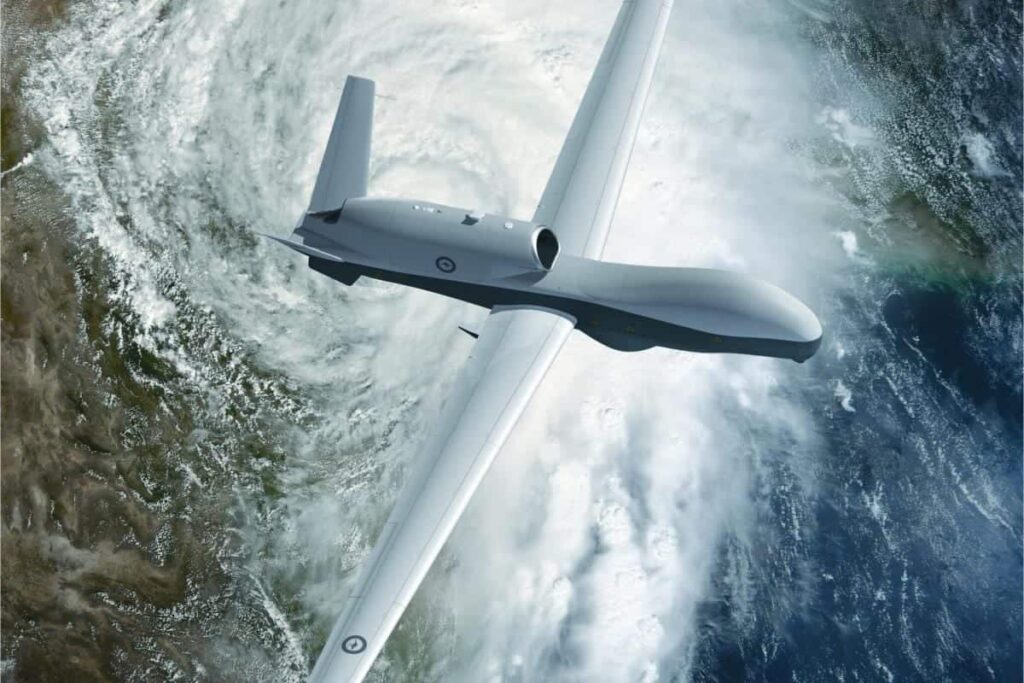
Credit: RAAF
Regarding the UAV acquisition target, the Australian MoD has in the past postulated a requirement for six or even seven units; six has been the official target since 2018. During his remarks at the Avalon Airshow, DPM Marles reiterated that “at this stage, we’ve got three that are on order, and that’s the extent of our acquisition.” He did, however, also cite the Australian DoD’s Integrated Investment Program “which does provide for more in the future.”
In aggregate, the statement made in 2020 by then Defence Minister Linda Reynolds still stands: “Together, the Poseidon and the Triton will provide Australia with one of the most advanced maritime patrol and response capabilities in the world, [enhancing] the Air Force’s flexibility to support multiple operations and will play an important role in ensuring Australia’s maritime region is secure for generations to come.”
Sidney E. Dean





